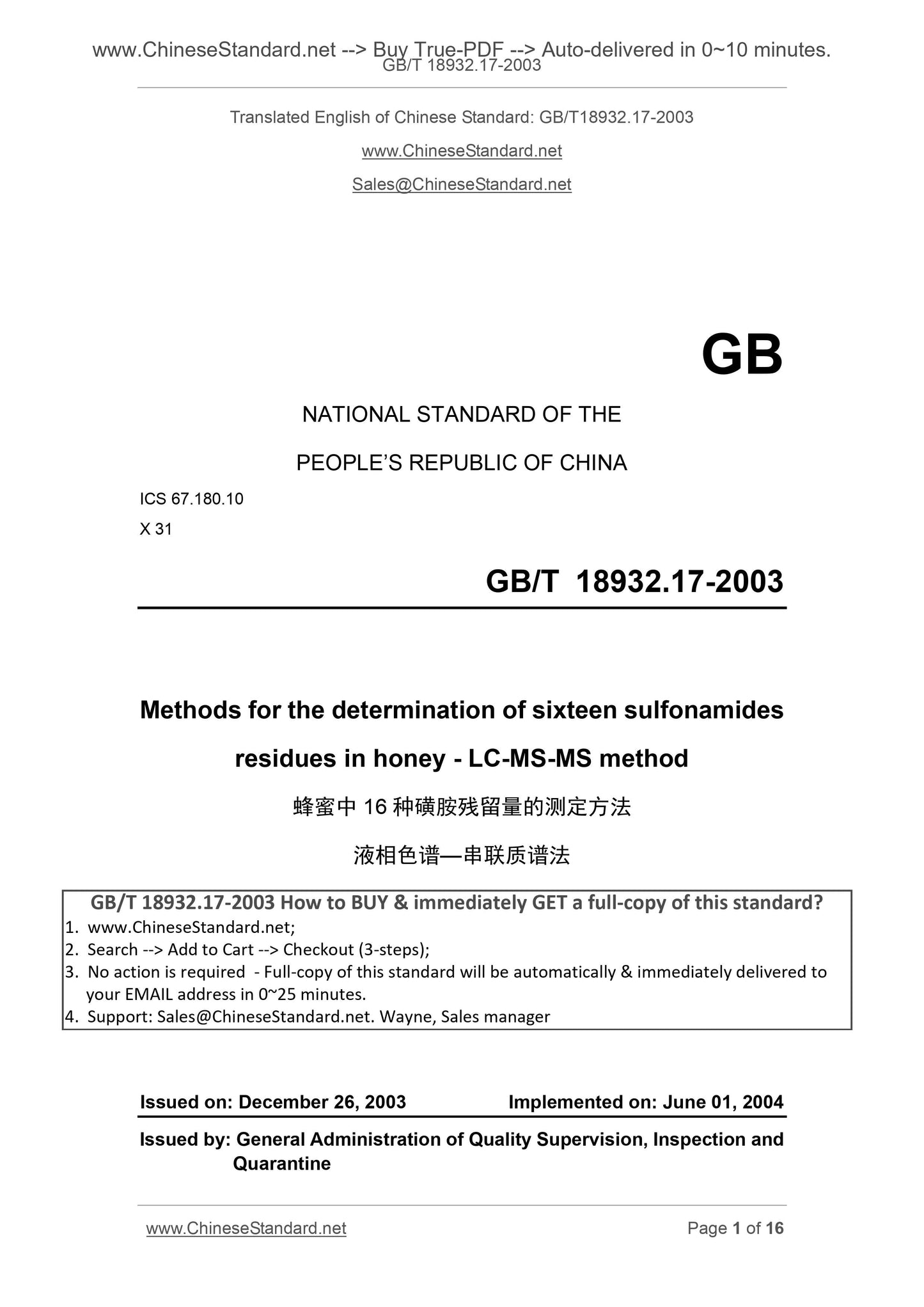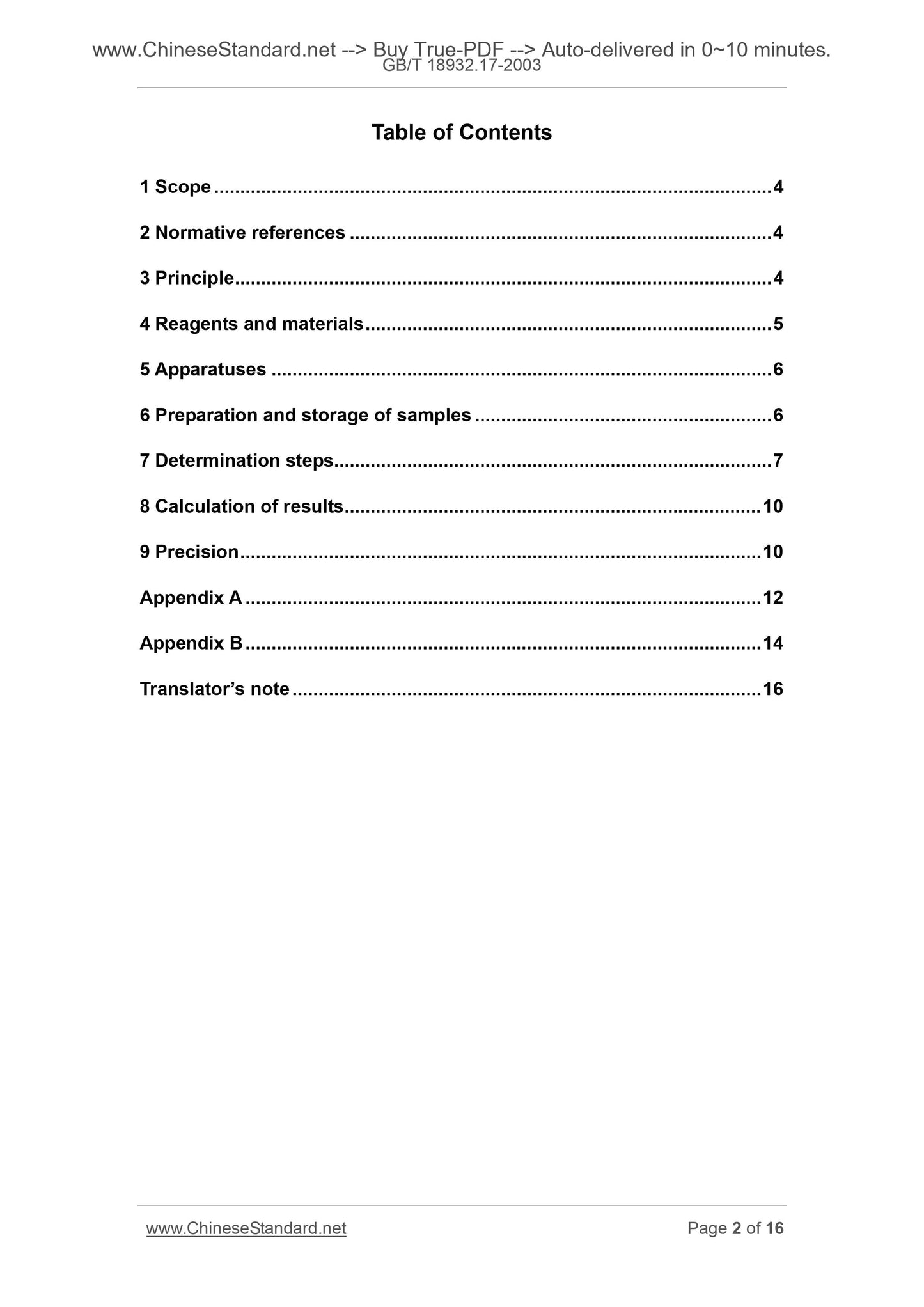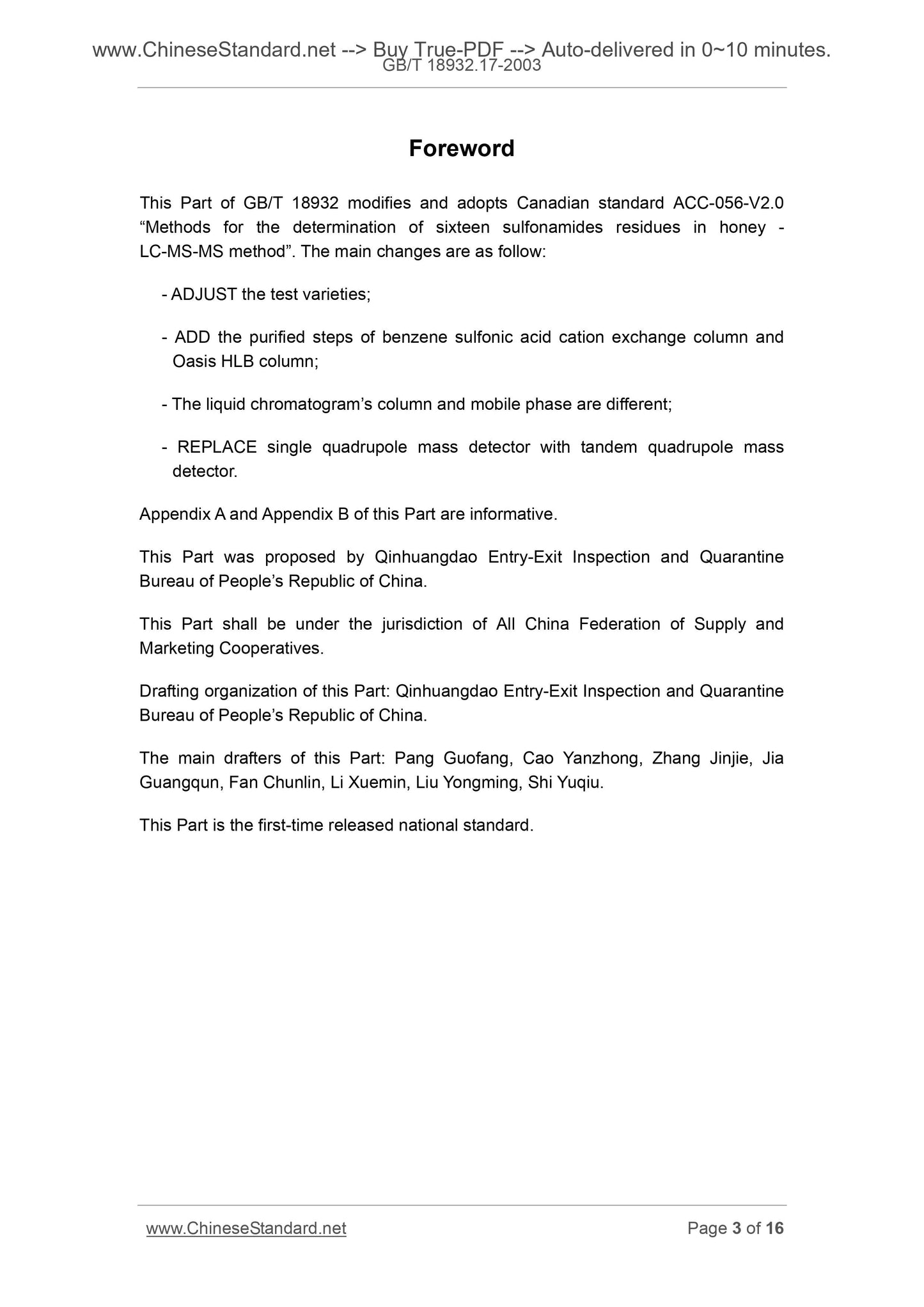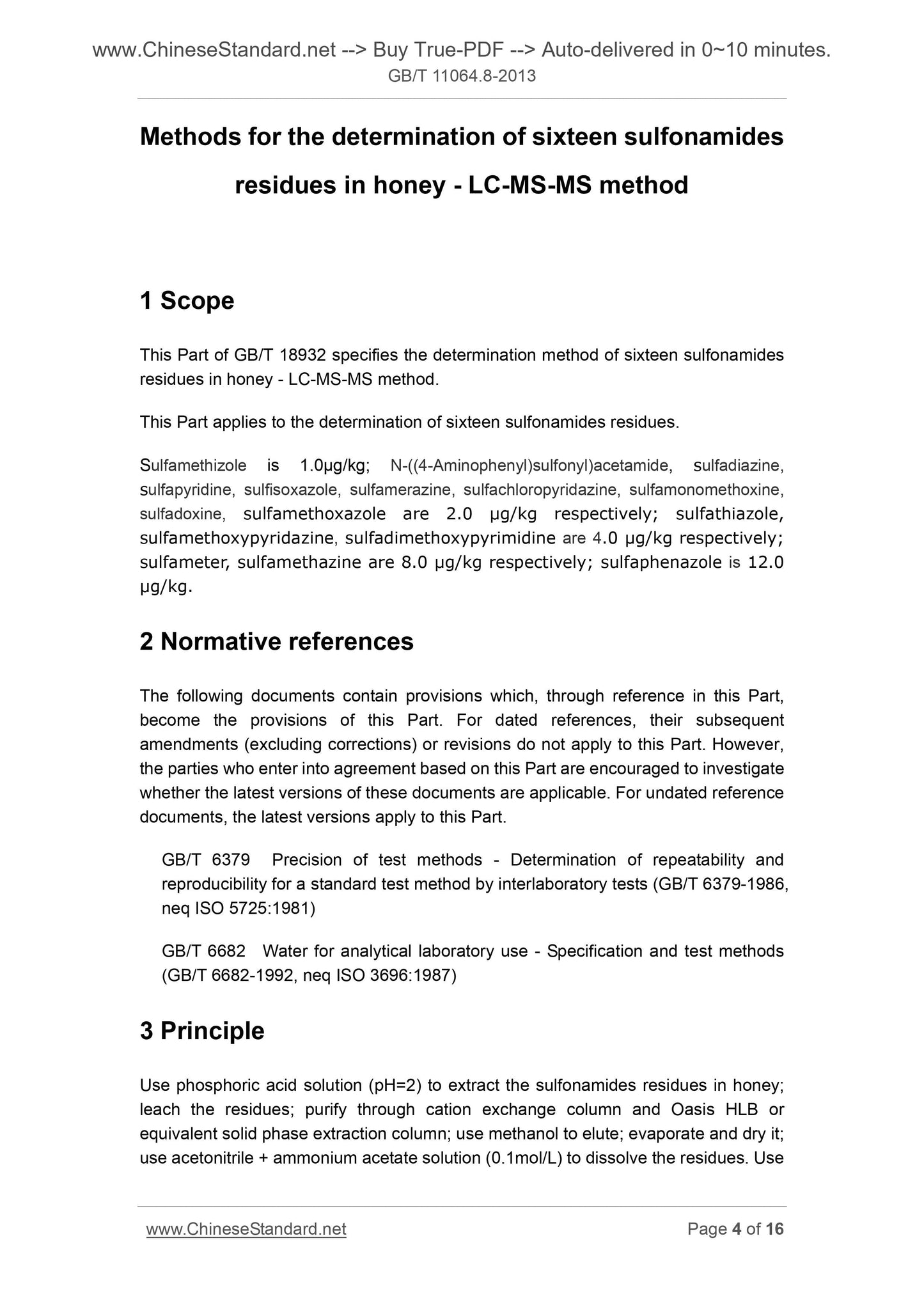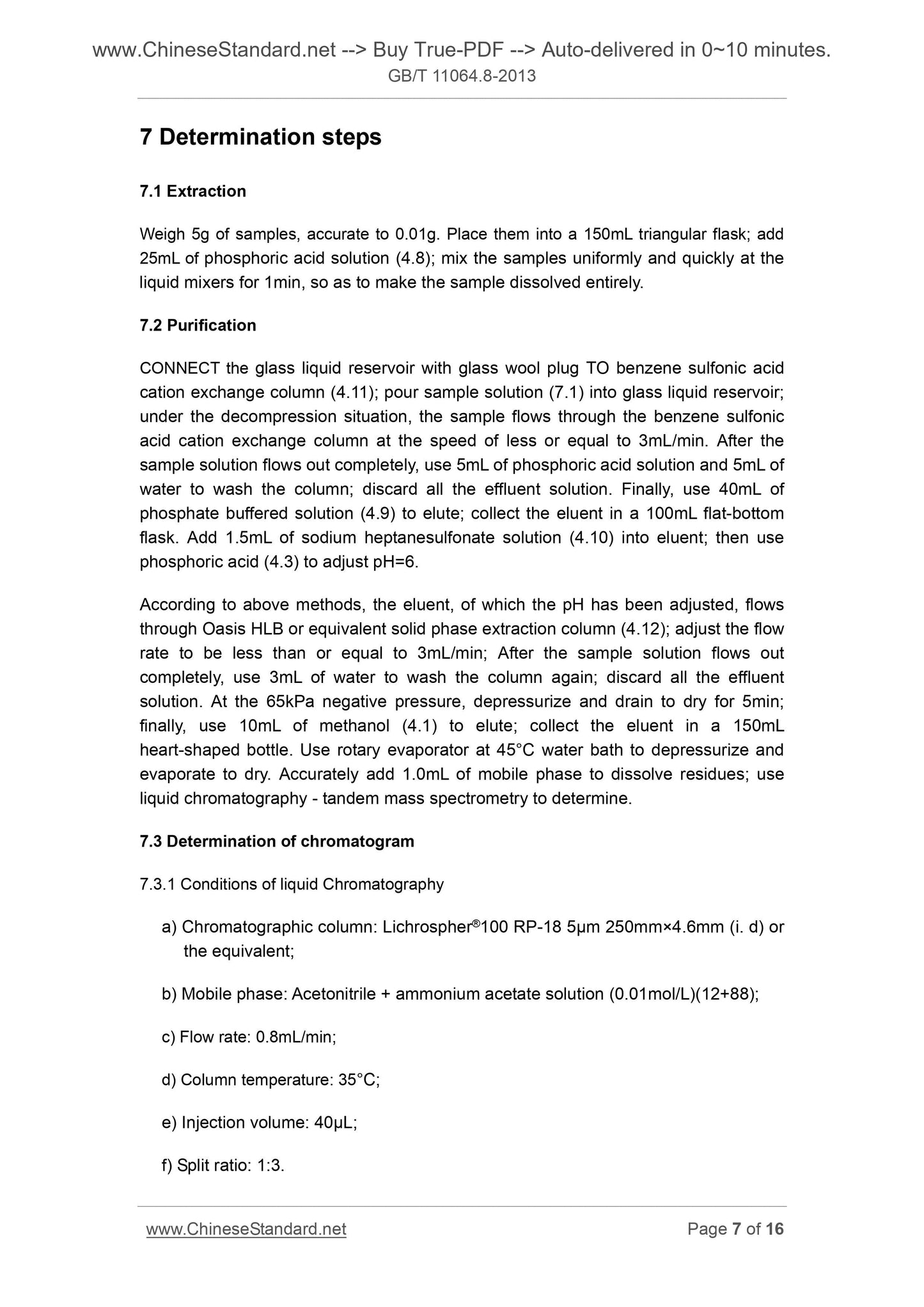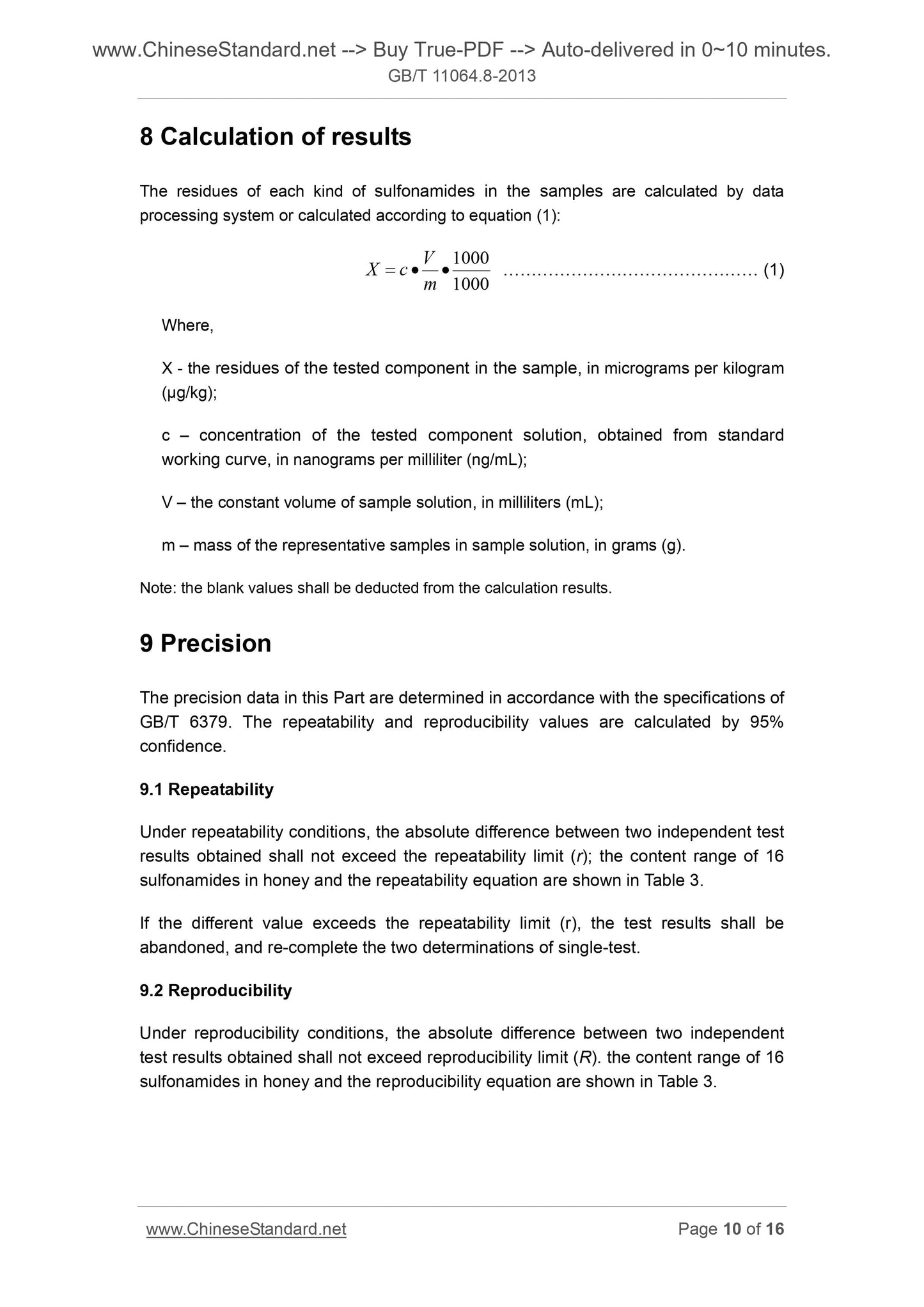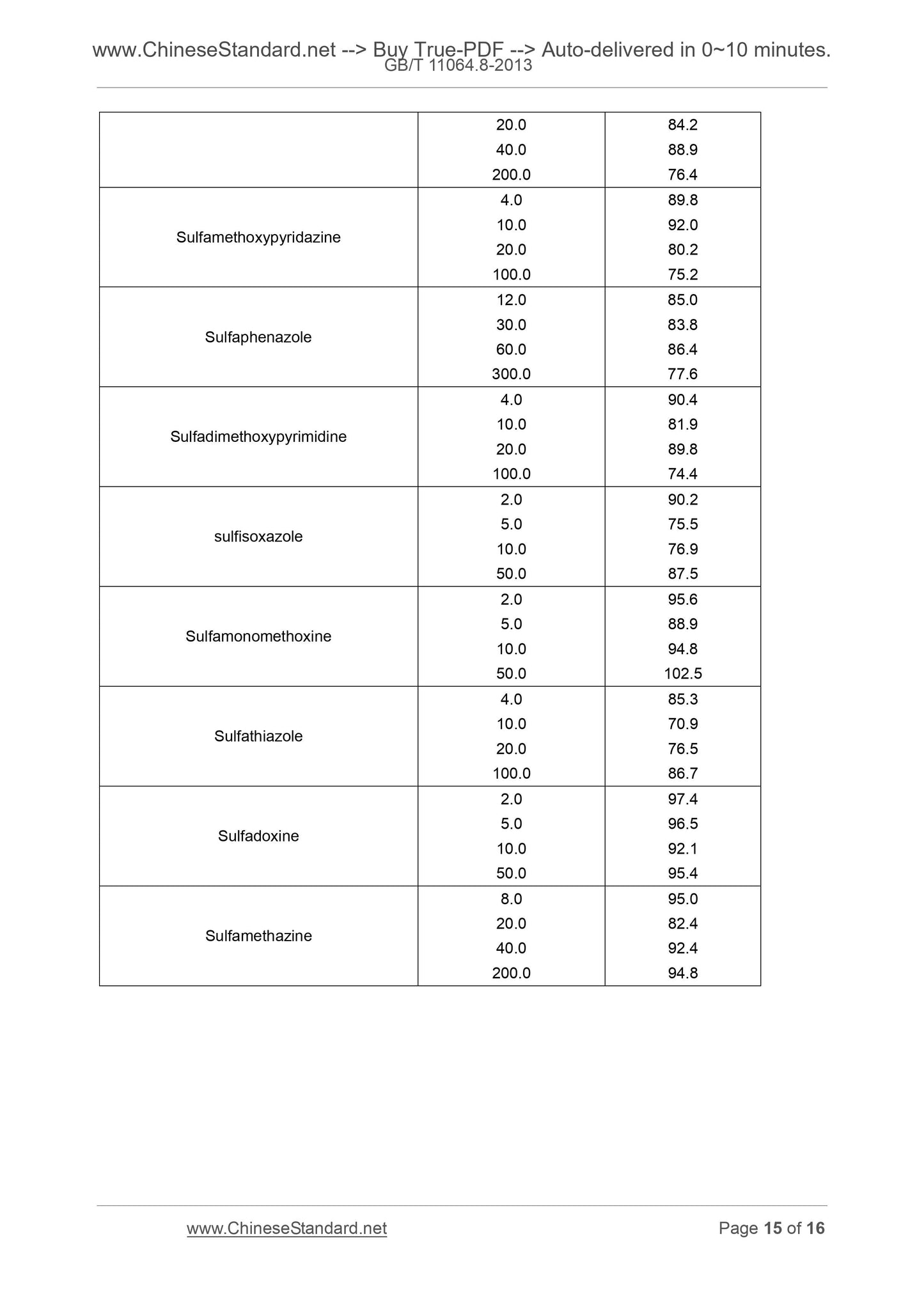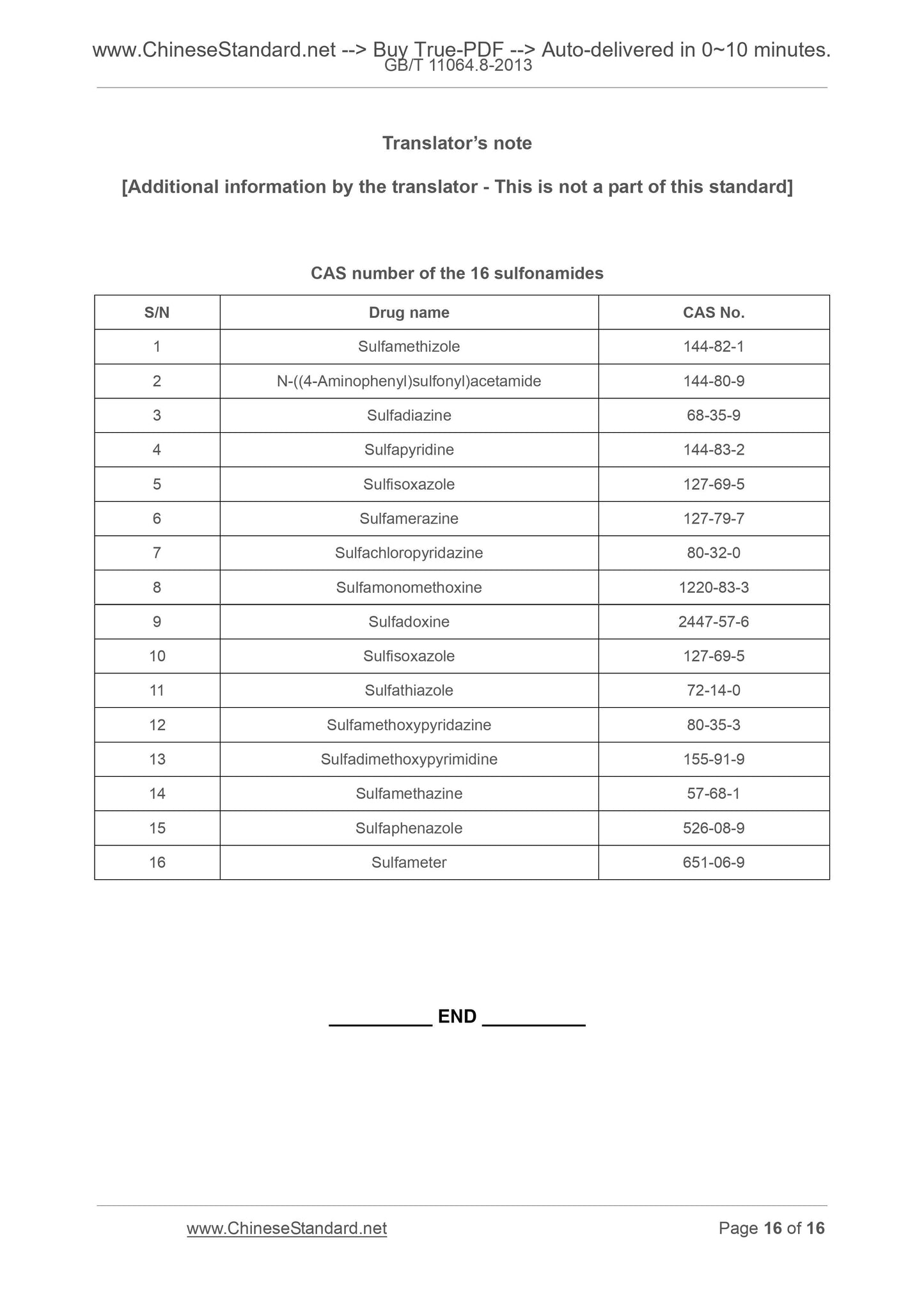1
/
of
8
www.ChineseStandard.us -- Field Test Asia Pte. Ltd.
GB/T 18932.17-2003 English PDF (GB/T18932.17-2003)
GB/T 18932.17-2003 English PDF (GB/T18932.17-2003)
Regular price
$90.00
Regular price
Sale price
$90.00
Unit price
/
per
Shipping calculated at checkout.
Couldn't load pickup availability
GB/T 18932.17-2003: Method for the determination of sixteen sulfonamides residues in honey -- LC-MS-MS method
Delivery: 9 seconds. Download (and Email) true-PDF + Invoice.Get Quotation: Click GB/T 18932.17-2003 (Self-service in 1-minute)
Newer / historical versions: GB/T 18932.17-2003
Preview True-PDF
Scope
This Part of GB/T 18932 specifies the determination method of sixteen sulfonamidesresidues in honey - LC-MS-MS method.
This Part applies to the determination of sixteen sulfonamides residues.
Sulfamethizole is 1.0µg/kg; N-((4-Aminophenyl)sulfonyl)acetamide, sulfadiazine,
sulfapyridine, sulfisoxazole, sulfamerazine, sulfachloropyridazine, sulfamonomethoxine,
sulfadoxine, sulfamethoxazole are 2.0 μg/kg respectively; sulfathiazole,
sulfamethoxypyridazine, sulfadimethoxypyrimidine are 4.0 μg/kg respectively;
sulfameter, sulfamethazine are 8.0 μg/kg respectively; sulfaphenazole is 12.0
μg/kg.
Basic Data
| Standard ID | GB/T 18932.17-2003 (GB/T18932.17-2003) |
| Description (Translated English) | Method for the determination of sixteen sulfonamides residues in honey-LC-MS-MS method |
| Sector / Industry | National Standard (Recommended) |
| Classification of Chinese Standard | X31 |
| Classification of International Standard | 67.180.10 |
| Word Count Estimation | 9,978 |
| Date of Issue | 2003-12-26 |
| Date of Implementation | 2004-06-01 |
| Quoted Standard | GB/T 6379 |
| Adopted Standard | ACC 056 V2.0; MOD |
| Issuing agency(ies) | General Administration of Quality Supervision, Inspection and Quarantine of the People Republic of China |
| Summary | This standard specifies: Honey 16 Sulfonamides Residues liquid chromatography tandem mass spectrometry. This standard applies to: Honey 16 Sulfonamides Residues Determination. This standard method detection limit |
Share
